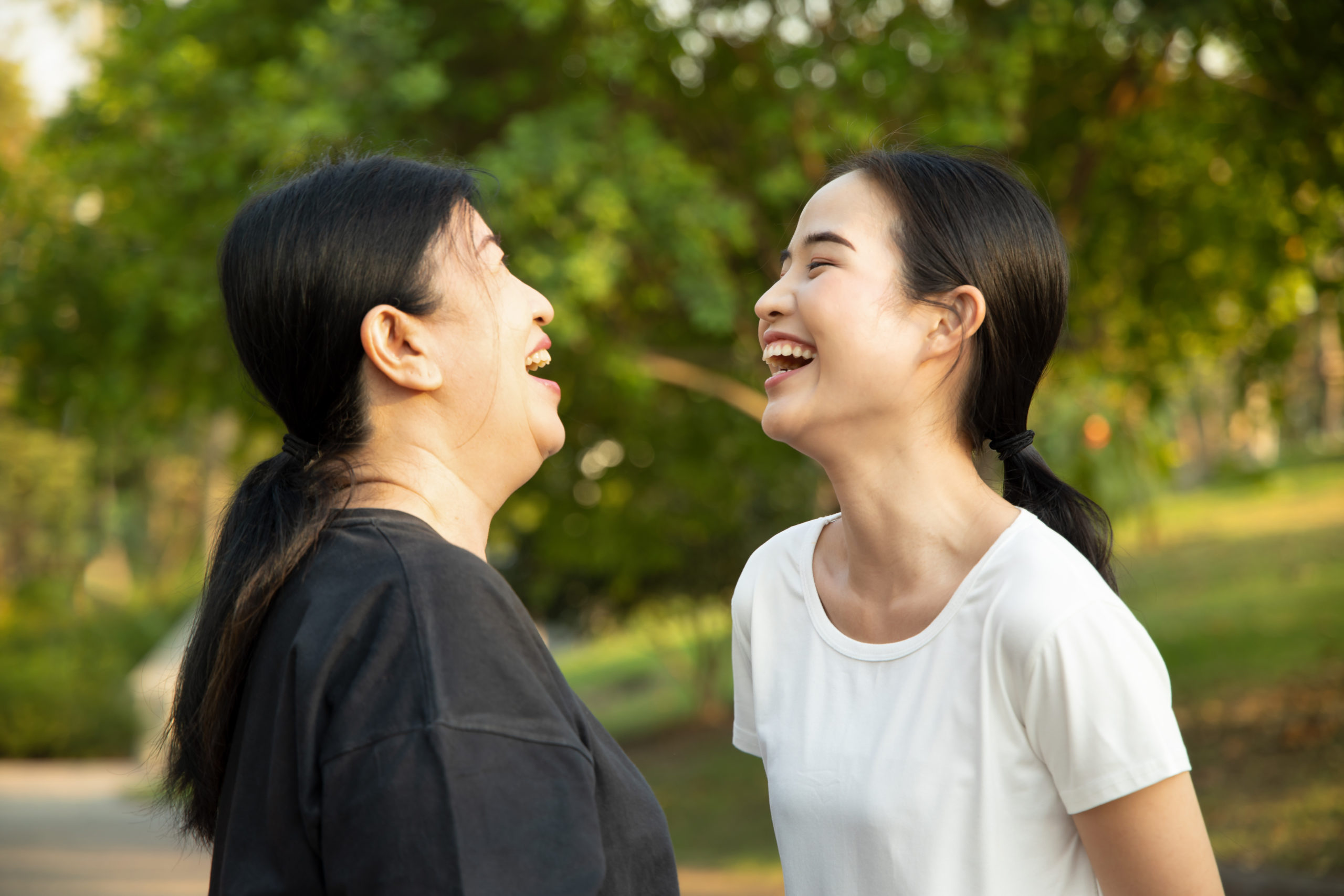What is Mind Body Wellness Therapy?
Mind body wellness therapies, or mind body therapies are a group of healing techniques that create a feeling of relaxation and are known to improve overall health and well-being. Mind body therapies are safe and effective ways to provide relief from many physical and emotional symptoms while improving coping skills in people who are experiencing chronic health conditions – including women suffering as a result of menopausal transition symptoms.
Practicing mind body wellness therapies and techniques regularly, preferably daily, provides the greatest benefit. [1]

It can be a bit overwhelming to start practicing mind body wellness techniques because there are so many to choose from. Knowing which ones will work for you can be difficult to know in advance. Luckily, it is easy to start narrowing down your options and there is no harm in trying something and realizing it isn’t for you. You just have to try it – if you like it, keep doing it. If you don’t like it, stop doing it!
There is abundant information available online or at your local library about most mind body wellness therapy options. You can also talk to your healthcare provider for recommendations. Ask around – your friends and family will likely have had experience with some techniques. You can also ask at your local community center or fitness centre – many of these have introductory classes of many different forms of mind body wellness therapies such as meditation, yoga, or tai chi.
Mind body therapies are generally regarded as safe and have other advantages including the satisfaction reported by people participating, the often simple ways to implement them, and well-known social, psychological, and health benefits. The side effects and risks of mind body wellness therapies are minimal, many are inexpensive to do, and importantly, mind body wellness therapies can be performed by a broad range of women, including those who are stressed, busy, overweight, sedentary, chronically ill, and frail. [2]
Research studies indicate that the use of mind body therapies to alleviate menopausal transition symptoms is increasingly common, and that satisfaction with the therapeutic benefits is generally high. In addition, a growing body of research suggests that mind body practices may have additional effects on health because they appear to enhance psychological and physical function and well-being in both healthy and chronically ill individuals. It is important to know, however, that most existing studies have limitations in the rigour of their scientific methods (not randomized, not controlled, small sample sizes, etc.) that make it difficult to interpret and provide strong scientifically-supported conclusions. [2] [3] [4] [5]
What are the Options for Mind Body Wellness Therapy?
Here we present 14 different mind body wellness therapies that can be used by women to improve their menopausal transition experience. These therapies can provide positive coping strategies to be used as part of their overall symptom management journey.

The Science
Mindfulness meditation has received a large amount of attention in neuroscience research over the past two decades. Many behavioral studies suggest that mindfulness meditation benefits, among other things, a person’s attention, memory, executive function, and cognitive flexibility – which is the ability to adjust your behaviour based on changes to your environment. Brain changes during meditation have been observed in numerous EEG and neuroimaging studies and there is some evidence for meditation effects on endocrine, neurotransmitter, and immune system measures. [7]
The effects of meditation can be seen in multiple brain regions, including the cerebral cortex, the grey matter (that contains neurons), the white matter (that contains axons which transmit signals to other parts of the brain, spinal cord, and body), the brainstem (that controls breathing, consciousness, blood pressure, heart rate, and sleep) and the cerebellum (that controls coordination and movement related to motor skills, and helps maintain posture, balance, and equilibrium). [34]

One meta-analysis on 21 neuroimaging studies (with a total of 300 subjects) that examined changes in brain structures related to mindfulness meditation. [34] They found several brain regions that show consistent difference between meditators and non- meditators, including:
- The prefrontal cortex (PFC) that is central to cognitive function and decision making;
- The sensory cortex – the parts of the brain that, combined, receives and processes sensory information;

Download PDF - The hippocampus that is central to learning and memory;
 Download PDF
Download PDF - The amygdala that controls emotional responses; and
- The anterior cingulate cortex (ACC) and orbitofrontal cortex (OFC) which play a major role in emotional expression, focusing attention, and mood regulation.
 Download PDF
Download PDF
Mindfulness meditation influences the ability to concentrate, to strengthen emotion regulation skills, and to enhance our self-awareness. Another meta-analysis study proposes that better attention control is related to increase in anterior cingulate cortex (ACC) and orbitofrontal cortex (OFC) activation in experienced meditators. This allows more conscious decision-making and increases the amount of attention the brain pays to any action it is doing. [35]
Experienced meditators report lower intensity and frequency of negative emotions and improved positive mood states after practicing mindfulness meditation, possibly meaning they are more successful at managing negative emotions. As well, some areas of the brain – the medial pre-frontal cortex (PFC) and the posterior cingulate cortex (PCC) – that are active during rest and when the mind wanders, show relatively little activity in meditators. [36]
The cognitive benefits of mindfulness meditation require consistent practice that goes through three stages of development. These stages may or may not happen in sequential order, and different people may be in these stages for different amounts of time.
- In the first stage, meditators learn to overcome habitual ways of internally reacting to their internal emotions such as impatience or frustration, resulting in greater PFC activation.
- In the second stage, meditators learn to overcome mind wandering, often referred to as the ‘monkey mind’.
- In the final stage, meditators rely less on conscious mind control (driven by the prefrontal cortex) during meditation and tap into a deep inner state of calm and stability that allows them to deal with mood changes and stressful experiences with less emotion.
Mindfulness meditation also appears to impact the aging of the brain. Normal aging causes a reduction in the amount of gray matter found in the hippocampal complex. One study compared the brains of long-term meditators with brains of non-meditators using a total of 100 subjects ranging from 24 to 77 years of age. They correlated gray matter volume with age and detected negative correlations (the older you are the less gray matter you have) within both groups of subjects. Surprisingly, however, they found that the rate at which gray matter decreases is higher in non-meditators than in meditators meaning that meditators generally have less age-related decline in gray matter compared to other people. [37]
The study proposed several possible explanations for the age-defying effects of long-term meditation. First, engaging the brain in intense mental activities can stimulate the creation of new synapses in neurons that can, over time, increase gray matter and reduce the normal age-related decrease.
Second, meditation may help conserve gray matter over time by reducing stress levels particularly in the hippocampus (which is negatively affected by stress) and the hypothalamus (which is responsible for regulating stress). Third, preserving gray matter may also be a result of better health in general, which is possible in meditators who may have healthier eating and sleeping habits. [36] [37]
Myths & Mysteries
FALSE
It is true that Tai Chi is a gentle soft practice, with slow transitions between postures. However, Tai Chi is a form of martial art, and some styles of Tai Chi maintain martial art techniques including fast, almost explosive movements among the soft slow postures. When practiced properly under the guidance of a qualified teacher tai chi can be very physically demanding.
Absolutely not true. Like any healthcare provider, training is required. Although the specific details may vary, to be a registered acupuncture practitioner requires completion of an approved program of study, successful completion of an approved examination and a minimum number of hours (typically around 500) within the two years previous to application for registration. Always check the credentials of any healthcare professional before using their services to ensure that they are qualified and able to perform safe treatments.
FALSE
Not true. Many acupuncture patients actually fall asleep during treatment because they are so deeply relaxed. The needles are very thin, and are nothing like the needles that are used to draw blood or give medications.
FALSE
Ummm, no. Rattlesnake venom is a natural product but it isn’t safe for human consumption. Same with plutonium and boiling water – you shouldn’t put those on your skin if you are interested in safety. Hydrogen sulfide is natural but if you breathe it in, rotten eggs are the last thing you smell. Ever. Essential oils are highly concentrated substances that have the potential to be harmful, especially if used in large doses. Talk to your doctor or a qualified, properly-trained alternative healthcare professional before trying any new aromatherapy. Document any reactions you have after using essential oils as allergies to some essential oils are common.
YES
Yes, meditation and mindfulness are easy quick ways to inject calm and peace into your busy day. But getting long-term benefits that last beyond the immediate time you are meditating does require practice. Regular long-term practice will provide the best results, such as maintaining a calm and peaceful mind throughout the day regardless of external stressors. The word ‘practice’ is intentional – like any other skill, meditation and mindfulness require an investment of time to fully develop and benefit from them.
FALSE
Quiet is definitely helpful for meditation and mindfulness, especially if you are just beginning. However, quiet is not required. Mindfulness, where you increase your focus and awareness of the now, can happen anywhere – noticing the sensation of the steering wheel beneath your hands as you sit in a traffic jam is being mindful. Meditation is also easier to practice in quiet locations, but experienced meditators know that it is possible to overcome distractions. Gurudev Sri Sri Ravi Shankar, an Indian guru (spiritual teacher) notes “What you resist, persists!”, meaning that the more you struggle against noise and distractions, the more they will bother and interfere with your meditation. The approach to meditation in a noisy environment is to become aware of it, acknowledge it, and then return to a focus on your breath. As you practice this regularly, there will come a time when you are able to transcend the distractions and they will stop bothering you.
FALSE
These two terms are often used interchangeably, but in fact mindfulness is just one of many types of meditation. Mindfulness meditation is a practice of focusing your attention on the present moment. If thoughts intrude (which they often will) they are noticed and released without judgement. The focus then turns back to the present moment. Mindfulness can also be a regular part of your daily life, where the key is to focus on what is happening in and around you. Eating, walking, and/or cleaning the house can all be done mindfully and this mindfulness interrupts the common tendency in all of us to dwell unnecessarily on challenges, stressful situations, and never-ending to-do lists.
NO
Not true! Practicing yoga is appropriate for all ages, shapes, and sizes. It is important to start your yoga practice in an appropriate class – so if you are recovering from an injury, suffering from perimenopausal body pain, or have any health issues, make sure you choose a gentle class rather than a hot, high-intensity yoga class that can cause injury.
YES
While the point of yoga is not to achieve and hold contorted postures, the physical element of yoga was specifically developed to exhaust the body so that the mind can be clear and relaxed for meditation. While some types of yoga focus on restorative postures that are designed to relax and calm the body, if you want a workout, yoga can also get you sweating. It’s your choice – there are many types of yoga and some are very physically demanding.
FALSE
Yoga is about mindful movement and focusing your attention on your breath as you perform various yoga postures. It’s an attitude of presence and self-acceptance, focusing more on ‘how’ than ‘what.’ Yoga poses are only one part of a larger practice that includes breathwork and meditation. A focus on doing, getting into, or holding yoga postures is not a part of the real yoga. No pain, no gain is the opposite of real yoga philosophy.
Citations
[2] Innes KE, Selfe TK, Vishnu A. mind body therapies for menopausal symptoms: a systematic review. Maturitas. 2010 Jun;66(2):135-49. doi: 10.1016/j.maturitas.2010.01.016. Epub 2010 Feb 18. PMID: 20167444; PMCID: PMC3031101.
[3] https://www.medicalnewstoday.com/articles/324279
[4] Keng SL, Smoski MJ, Robins CJ. Effects of mindfu[6]lness on psychological health: a review of empirical studies. Clin Psychol Rev. 2011 Aug;31(6):1041-56. doi: 10.1016/j.cpr.2011.04.006. Epub 2011 May 13. PMID: 21802619; PMCID: PMC3679190.
[5] R. Sood, C. L. Kuhle, E. Kapoor, J. M. Thielen, K. S. Frohmader, K. C. Mara & S. S. Faubion (2019) Association of mindfulness and stress with menopausal symptoms in midlife women, Climacteric, 22:4, 377-382, DOI: 10.1080/13697137.2018.1551344
[6] https://my.clevelandclinic.org/health/articles/17906-meditation
[7] Wahbeh H, Elsas SM, Oken BS. mind body interventions: applications in neurology. Neurology. 2008 Jun 10;70(24):2321-8. doi: 10.1212/01.wnl.0000314667.16386.5e. PMID: 18541886; PMCID: PMC2882072.
[8] https://www.mindful.org/what-is-mindfulness/
[9] https://www.mayoclinic.org/tests-procedures/hypnosis/about/pac-20394405
[10] Johnson, A., Roberts, L., & Elkins, G. (2019). Complementary and Alternative Medicine for Menopause. Journal of evidence-based integrative medicine, 24, 2515690X19829380. https://doi.org/10.1177/2515690X19829380
[11] https://www.apa.org/ptsd-guideline/patients-and-families/cognitive-behavioral
[12] https://www.healthline.com/health/biofeedback
[13] Niazi AK, Niazi SK. Mindfulness-based stress reduction: a non-pharmacological approach for chronic illnesses. N Am J Med Sci. 2011 Jan;3(1):20-3. doi: 10.4297/najms.2011.320. PMID: 22540058; PMCID: PMC3336928.
[14] https://www.medicalnewstoday.com/articles/286745
[15] https://www.nccih.nih.gov/health/yoga-what-you-need-to-know
[16] Cramer H, Peng W, Lauche R. Yoga for menopausal symptoms-A systematic review and meta-analysis. Maturitas. 2018 Mar;109:13-25. doi: 10.1016/j.maturitas.2017.12.005. Epub 2017 Dec 6. PMID: 29452777.
[17] Shepherd-Banigan M, Goldstein KM, Coeytaux RR, McDuffie JR, Goode AP, Kosinski AS, Van Noord MG, Befus D, Adam S, Masilamani V, Nagi A, Williams JW Jr. Improving vasomotor symptoms; psychological symptoms; and health-related quality of life in peri- or post-menopausal women through yoga: An umbrella systematic review and meta-analysis. Complement Ther Med. 2017 Oct;34:156-164. doi: 10.1016/j.ctim.2017.08.011. Epub 2017 Aug 24. PMID: 28917368; PMCID: PMC6980280.
[18] https://brainworldmagazine.com/aromatherapy-and-the-brain-part-1/
[20] PDQ Integrative, Alternative, and Complementary Therapies Editorial Board. Aromatherapy With Essential Oils (PDQ®): Health Professional Version. 2022 Jun 7. In: PDQ Cancer Information Summaries [Internet]. Bethesda (MD): National Cancer Institute (US); 2002-. Available from: https://www.ncbi.nlm.nih.gov/books/NBK65874/
[21] https://www.yalescientific.org/2011/11/aromatherapy-exploring-olfaction/
[22] Embong NH, Soh YC, Ming LC, Wong TW. Revisiting reflexology: Concept, evidence, current practice, and practitioner training. J Tradit Complement Med. 2015 Sep 28;5(4):197-206. doi: 10.1016/j.jtcme.2015.08.008. PMID: 26587391; PMCID: PMC4624523.
[23] https://www.mayoclinic.org/healthy-lifestyle/consumer-health/expert-answers/what-is-reflexology
[24] https://www.nccih.nih.gov/health/homeopathy
[25] Posadzki P, Alotaibi A, Ernst E. Adverse effects of homeopathy: a systematic review of published case reports and case series. Int J Clin Pract. 2012 Dec;66(12):1178-88. doi: 10.1111/ijcp.12026. PMID: 23163497.
[26] https://www.hopkinsmedicine.org/health/wellness-and-prevention/acupuncture
[27] https://www.mayoclinic.org/tests-procedures/acupuncture/about/pac-20392763
[28] https://www.mayoclinic.org/healthy-lifestyle/stress-management/in-depth/tai-ch
[29] Xu H, Lawson D, Kras A. A study on Tai Ji exercise and traditional Chinese medical modalities in relation to bone structure, bone function and menopausal symptoms. Journal of Chinese Medicine. 2004;(74):3–7. [Google Scholar]
[30] Wang Y, Shan W, Li Q, Yang N, Shan W. Tai Chi Exercise for the Quality of Life in a Perimenopausal Women Organization: A Systematic Review. Worldviews Evid Based Nurs. 2017 Aug;14(4):294-305. doi: 10.1111/wvn.12234. Erratum in: Worldviews Evid Based Nurs. 2017 Oct;14 (5):424. PMID: 28742289.
[31] https://www.nccih.nih.gov/health/qigong-what-you-need-to-know
[32] Yeh SC, Chang MY. The effect of Qigong on menopausal symptoms and quality of sleep for perimenopausal women: a preliminary observational study. J Altern Complement Med. 2012 Jun;18(6):567-75. doi: 10.1089/acm.2011.0133. Epub 2012 Apr 26. PMID: 22537466.
[33] L. Taylor-Swanson, A. Thomas, R. Ismail, J. G. Schnall, L. Cray, E. S. Mitchell & N. F. Woods (2015) Effects of traditional Chinese medicine on symptom clusters during the menopausal transition, Climacteric, 18:2, 142-156, DOI: 10.3109/13697137.2014.937687
[34] Fox KC, Nijeboer S, Dixon ML, Floman JL, Ellamil M, Rumak SP, Sedlmeier P, Christoff K. Is meditation associated with altered brain structure? A systematic review and meta-analysis of morphometric neuroimaging in meditation practitioners. Neurosci Biobehav Rev. 2014 Jun;43:48-73. doi: 10.1016/j.neubiorev.2014.03.016. Epub 2014 Apr 3. PMID: 24705269.
[35] https://www.nature.com/articles/nrn3916
[36] https://neuro.wharton.upenn.edu/community/winss_scholar_blog2/
[37] Kurth, F., Cherbuin, N., & Luders, E. (2015). Reduced age-related degeneration of the hippocampal subiculum in long-term meditators. Psychiatry Research: Neuroimaging, 232(3), 214-218.
[38] Heidi Jiang, Matthew P. White, Michael D. Greicius, Lynn C. Waelde, David Spiegel, Brain Activity and Functional Connectivity Associated with Hypnosis, Cerebral Cortex, Volume 27, Issue 8, August 2017, Pages 4083–4093, https://doi.org/10.1093/cercor/bhw220
[40] Porto, P. R., Oliveira, L., Mari, J., Volchan, E., Figueira, I., & Ventura, P. (2009). Does cognitive behavioral therapy change the brain? A systematic review of neuroimaging in anxiety disorders. The Journal of Neuropsychiatry and Clinical Neurosciences, 21(2), 114–125.
[41] https://www.health.harvard.edu/staying-healthy/yoga-for-better-mental-health
[42] Gothe NP, Khan I, Hayes J, Erlenbach E, Damoiseaux JS. Yoga Effects on Brain Health: A Systematic Review of the Current Literature. Brain Plast. 2019 Dec 26;5(1):105-122. doi: 10.3233/BPL-190084. PMID: 31970064; PMCID: PMC6971819.43]
[43] Fung TKH, Lau BWM, Ngai SPC, Tsang HWH. Therapeutic Effect and Mechanisms of Essential Oils in Mood Disorders: Interaction between the Nervous and Respiratory Systems. Int J Mol Sci. 2021 May 3;22(9):4844. doi: 10.3390/ijms22094844. PMID: 34063646; PMCID: PMC8125361.
[44] Kwokming James Cheng, Neurobiological Mechanisms of Acupuncture for Some Common Illnesses: A Clinician’s Perspective. Journal of Acupuncture and Meridian Studies, 2014 Volume 7, Issue 3, 105-114.
ISSN 2005-2901, https://doi.org/10.1016/j.jams.2013.07.008.
Original content, last updated August 31, 2023.
© 2025 Herstasis® Health Foundation




